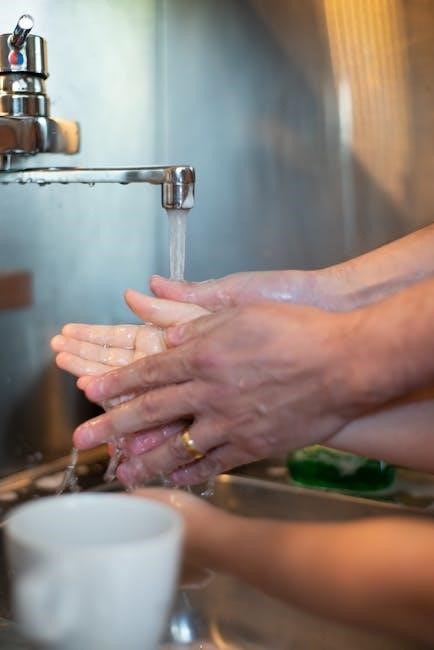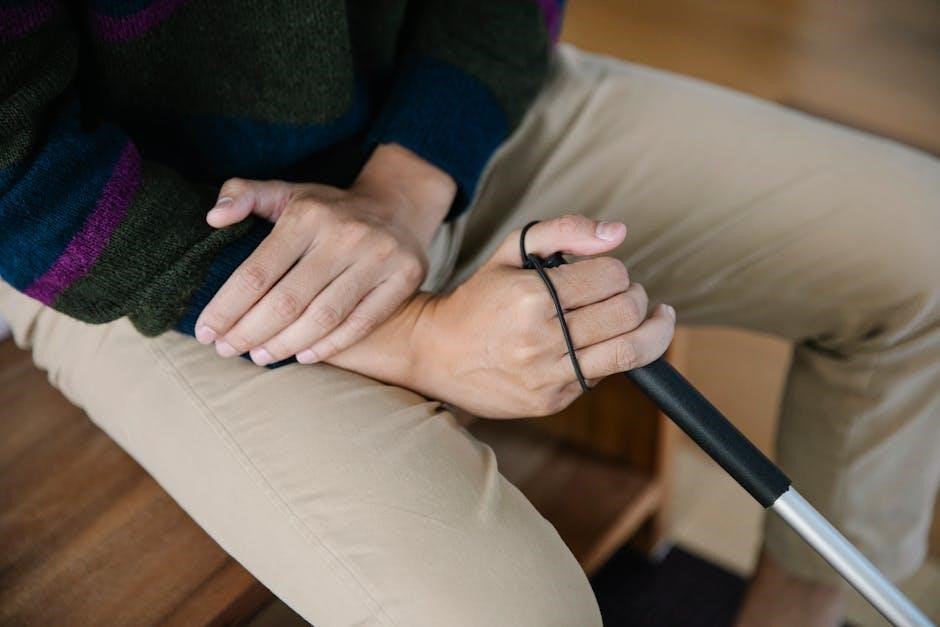The Safety 1st Guide 65 Recall addresses critical safety concerns with the convertible car seat, ensuring child protection and compliance with safety standards. Approximately 180,000 units were recalled due to a foam headrest detachment issue, posing a choking hazard.
What is Safety 1st Guide 65?
![]()
The Safety 1st Guide 65 is a convertible car seat designed to accommodate children from infancy through early childhood. It supports both rear-facing and forward-facing configurations, making it a versatile option for growing children. The seat is part of the Dorel Juvenile Group’s product lineup, a company known for prioritizing family safety and innovation. The Guide 65 is engineered to meet rigorous safety standards, offering features such as adjustable harnesses, cushioning, and a sturdy design to ensure proper positioning and protection for children. It is suitable for children within specific weight and height ranges, providing a reliable solution for parents seeking a long-lasting car seat. The product’s design emphasizes ease of use, durability, and comfort, making it a popular choice among caregivers. However, like all products, it is subject to scrutiny and updates to ensure ongoing safety and compliance with regulations.
The Safety 1st Guide 65 Recall was issued due to potential safety hazards, including a foam headrest that could detach, posing a choking risk. Approximately 180,000 units were affected, prompting corrective actions to ensure child safety.
Foam Headrest Issue
The foam headrest issue in the Safety 1st Guide 65 car seat posed a significant safety risk. The headrest could detach during use, creating a choking hazard for young children. This defect led to the recall of approximately 180,000 units. Consumers were advised to stop using the affected seats until a repair kit was installed. The manufacturer provided free repair kits to address the issue, ensuring the headrest remained securely attached. This proactive measure aimed to prevent potential injuries and maintain consumer trust in the product’s safety. The foam headrest issue underscored the importance of rigorous testing and quality control in child safety products. By addressing the problem promptly, the company demonstrated its commitment to protecting children and upholding safety standards. The recall also highlighted the need for parents to stay informed about product safety updates to ensure their children’s well-being.
Label Issue in Canada

In Canada, the Safety 1st Guide 65 car seat faced a label issue that required corrective action. The problem involved small errors in the instruction manual and labels on some seats. Canadian regulations mandate specific information to be provided with child car seats, and these errors, while minor, necessitated attention. The issue was not classified as a recall, as it did not pose a direct safety risk. However, the manufacturer took steps to address the problem by updating the manuals and labels to ensure compliance with Canadian standards. Consumers were informed that they could continue using the seats without interruption, as the errors did not affect the product’s safety performance. This action demonstrated the company’s commitment to meeting regulatory requirements and maintaining consumer trust. The label issue in Canada served as a reminder of the importance of precise communication in product documentation, especially for critical safety items like child car seats.
Corrective Actions
To address the Safety 1st Guide 65 recall, the manufacturer implemented corrective actions to ensure consumer safety and regulatory compliance. For the foam headrest issue, consumers were provided with free repair kits to secure the headrest and prevent detachment. These kits were designed to be easy to install, minimizing inconvenience for parents. Additionally, for the label issue in Canada, the company updated the instruction manuals and labels to correct the errors and meet Canadian regulatory requirements. Consumers were instructed to continue using the car seats while awaiting their repair kits, as the issues did not immediately compromise safety. The manufacturer also established a dedicated website and customer service hotline to assist consumers in obtaining the necessary repairs. By taking these steps, the company aimed to restore confidence in the product and ensure ongoing compliance with safety standards. These corrective actions underscored the importance of proactive measures in addressing potential hazards and maintaining consumer trust.
Consumer Response
The Safety 1st Guide 65 recall prompted a mixed response from consumers, with many expressing concern about the safety of their children. Parents appreciated the company’s proactive approach in issuing repair kits and providing clear instructions, which helped maintain trust in the brand. However, some consumers faced challenges in obtaining the repair kits, citing delays or difficulties in navigating the process. Social media and online forums became platforms for sharing experiences, with some parents advising others on how to install the kits correctly. Despite the inconvenience, most consumers acknowledged the importance of the recall in ensuring their children’s safety. The recall also highlighted the need for greater awareness about car seat safety and the importance of regularly checking for recalls. Overall, while the situation was unsettling for many, the majority of consumers cooperated with the corrective actions, prioritizing their children’s well-being. This response underscores the critical role of clear communication and efficient solutions in such situations.
Reasons Behind the Recall
The Safety 1st Guide 65 recall was primarily due to the foam headrest posing a choking hazard and non-compliance with safety regulations, highlighting critical design flaws that compromised child safety;

Choking Hazard
The primary reason for the Safety 1st Guide 65 recall was the foam headrest’s potential to detach, posing a choking hazard for young children. This issue was identified as a critical safety concern, prompting immediate action to protect vulnerable users. The foam headrest, designed for comfort, could separate from the seat, creating a small part that a child might ingest or choke on. This risk was deemed unacceptable, leading to the recall of approximately 180,000 units. The recall emphasized the importance of ensuring all components of child safety products remain securely attached and meet rigorous safety standards. Parents and caregivers were urged to stop using the affected seats until the necessary repairs were made. The choking hazard underscored the need for continuous monitoring and testing of child safety products to prevent such risks. This incident highlights the critical role of regulatory oversight in safeguarding children’s well-being.
Non-Compliance with Regulations
The Safety 1st Guide 65 recall also highlighted issues of non-compliance with regulatory standards, particularly in Canada. Certain models were found to have labeling errors that did not meet Canadian regulatory requirements. While these errors were deemed unlikely to pose a direct safety risk, they violated mandatory labeling standards for child safety products. This non-compliance led to corrective actions, as the company was required to update the instruction manuals and labels to ensure adherence to federal regulations. The issue underscored the importance of strict compliance with safety standards to maintain consumer trust and brand integrity. Regulatory bodies emphasized that even minor discrepancies in labeling could lead to legal consequences and reputational damage. This aspect of the recall served as a reminder for manufacturers to prioritize regulatory adherence to avoid such issues in the future. The corrective measures taken by Safety 1st demonstrated a commitment to addressing these oversights and ensuring full compliance with safety laws.

Design Flaws
The Safety 1st Guide 65 recall revealed critical design flaws in the convertible car seat, primarily related to the foam headrest. The headrest was found to detach with minimal force, posing a choking hazard for young children. This design oversight raised significant safety concerns, as it compromised the product’s ability to protect children in the event of sudden movements or accidents. The issue was traced back to inadequate testing and quality control measures during the manufacturing process. Regulatory bodies and consumer safety organizations emphasized the need for rigorous testing protocols to identify and address such flaws before products reach the market. The recall highlighted the importance of prioritizing child safety in product design and the necessity of continuous improvement in safety standards. By addressing these design flaws, manufacturers can ensure that their products meet the highest safety expectations and protect vulnerable users effectively. This incident served as a critical lesson for the industry, underscoring the importance of proactive design evaluations.

Consumer Guidance
Consumers should check the recall status of their Safety 1st Guide 65 car seat and contact the manufacturer for a free repair kit to ensure their child’s safety.
Checking Recall Status
To determine if your Safety 1st Guide 65 car seat is affected by the recall, visit the official U.S. Consumer Product Safety Commission (CPSC) website or the National Highway Traffic Safety Administration (NHTSA) portal. Enter your car seat’s model number and manufacturing date to check its recall status. You can find this information on the seat’s label or in the instruction manual. If your seat is recalled, stop using it immediately and contact Safety 1st customer service at (800) 964-8489 for a free repair kit. Additionally, register your car seat with the manufacturer to receive updates on any future recalls. Always verify the recall status before purchasing a used car seat to ensure it is safe for your child. Regularly checking for recalls is a critical step in maintaining your child’s safety while traveling.
If your Safety 1st Guide 65 car seat is part of the recall, follow these steps to ensure your child’s safety. First, immediately stop using the affected car seat and check the recall status on the U.S. Consumer Product Safety Commission (CPSC) website or the National Highway Traffic Safety Administration (NHTSA) portal. Next, contact Safety 1st customer service at (800) 964-8489 to request a free repair kit. Provide your car seat’s model number and manufacturing date, which can be found on the seat’s label or in the instruction manual. Once you receive the repair kit, carefully follow the instructions to install it. Do not attempt to modify the car seat yourself, as this could compromise its safety. After completing the repair, inspect the car seat to ensure all parts are securely in place. Finally, continue to monitor for any additional updates or recalls by registering your car seat with the manufacturer. By taking these steps, you can restore the safety and reliability of your Safety 1st Guide 65 car seat. To address the Safety 1st Guide 65 recall, consumers can obtain a free repair kit to fix the foam headrest issue. Contact Safety 1st customer service at (800) 964-8489 to request the kit. Provide your car seat’s model number and manufacturing date, which can be found on the label or in the manual. Once the kit arrives, follow the included instructions to install it correctly. The repair is designed to prevent the headrest from detaching and posing a choking hazard. Ensure the kit is installed properly to maintain the seat’s safety features. If you have questions or need assistance, reach out to Safety 1st support for guidance. This repair is free of charge and essential for ensuring your child’s safety while using the car seat. By taking this step, you can restore confidence in the product’s performance and compliance with safety standards. The Safety 1st Guide 65 recall affected approximately 180,000 units, raising concerns about brand reputation and consumer trust. The recall highlighted the importance of rigorous safety testing and prompt corrective actions to ensure product reliability. The Safety 1st Guide 65 recall involved approximately 180,000 units of the convertible car seat, highlighting a significant impact on consumers. The recall was initiated due to the foam headrest detachment issue, which posed a choking hazard to children. Additionally, a label issue in Canada affected some units, though it did not compromise safety. The large number of affected seats underscores the importance of prompt corrective actions to ensure consumer safety. The recall process included providing free repair kits to address the foam headrest problem, while the label issue was resolved through updated manuals. The sheer volume of recalled units demonstrates the potential risks associated with design flaws and regulatory non-compliance. This situation emphasizes the need for rigorous testing and quality control measures to prevent future recalls. The recall also raises awareness about the importance of monitoring product safety and adhering to regulatory standards. Consumers were advised to check their seats and take necessary steps to ensure their child’s safety. The recall process was designed to minimize risks and restore trust in the product. The Safety 1st Guide 65 recall has raised concerns about the brand’s reputation, as it impacts consumer trust in their products. Safety 1st, known for prioritizing child safety, faced scrutiny due to the foam headrest issue and label errors. While the company took corrective actions, including providing repair kits and updated manuals, the recall has led to questions about quality control and design oversight. The brand’s commitment to addressing the issue promptly may help mitigate long-term damage, but the recall has likely affected consumer perception. Parents and caregivers, who rely on Safety 1st for reliable safety solutions, may now exercise greater caution before purchasing their products. The recall serves as a reminder of the challenges companies face in maintaining trust while ensuring compliance with safety standards. Moving forward, Safety 1st will need to demonstrate enhanced vigilance in product design and testing to rebuild its reputation as a leader in child safety products. The recall underscores the importance of transparency and swift action in preserving brand loyalty. The Safety 1st Guide 65 recall has sparked concerns among parents and caregivers, potentially eroding consumer trust in the brand. Many rely on Safety 1st for reliable child safety products, and the recall has raised questions about the company’s ability to ensure product safety. While the recall was initiated to address critical issues, such as the foam headrest detachment and labeling errors, it has led to heightened scrutiny of the brand’s quality control processes. Consumers expect transparency and accountability from manufacturers, especially when it comes to products designed to protect children. The recall has prompted some parents to seek alternative brands, while others have expressed frustration over the inconvenience of obtaining repair kits or updated manuals. To rebuild trust, Safety 1st must demonstrate a commitment to rigorous testing and clear communication with consumers. The recall serves as a reminder of the importance of maintaining high safety standards and fostering open dialogue with customers to address concerns promptly and effectively. Enhancing design and testing processes is crucial to avoiding future recalls. Rigorous testing protocols, improved quality control, and adherence to safety regulations can help identify and address potential issues before products reach consumers. The Safety 1st Guide 65 Recall highlights the importance of robust design and testing processes to prevent future issues. Enhanced testing protocols, including rigorous stress tests and material inspections, can help identify potential flaws early. By improving quality control measures, manufacturers can ensure compliance with safety standards and reduce the risk of recalls. Additionally, incorporating feedback from consumers and regulatory bodies into the design process can lead to safer and more reliable products. Proactive testing and continuous improvement are essential to maintaining trust and ensuring child safety.Steps to Take
Obtaining Repair Kit


Impact of the Recall
Number of Affected Units

Brand Reputation
Consumer Trust

Preventing Future Recalls
Design and Testing
